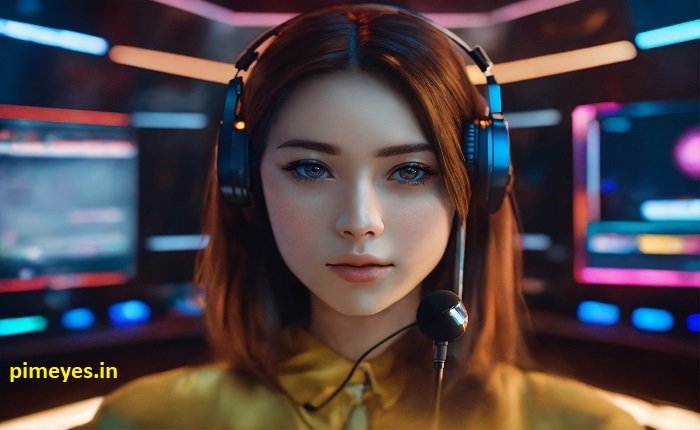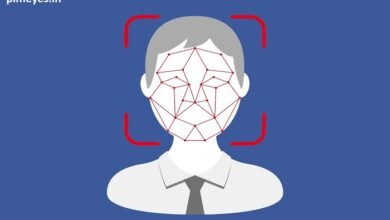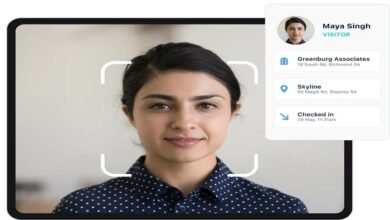Free Facial Recognition Search: A Comprehensive Guide

Free facial recognition online search tools: transforming tech in today’s digital age They utilize cutting-edge algorithms and large databases to deliver precise and rapid recognition, making it an indispensable tool in disciplines including security, marketing, and personal use. In this all-inclusive guide, we will explore the details of free facial recognition search, discussing its functionality, applications, advantages, and moral implications. If you are a tech enthusiast or a business owner or simply interested in it, you need to know free facial recognition to navigate its potential and limitations. We will help you navigate the large world of free facial recognition search.
What is “Free Facial Recognition Search”?
Free facial recognition search is the use of software and online platforms to identify people based on their facial features, at no cost to the user. These advanced technologies use machine learning-based algorithms to compare the unique characteristics of a person’s faces — from the 3D structure to minute details. Free facial recognition search has made the technology more accessible than ever, allowing a wider range of users to utilize its powerful capabilities. Free facial recognition search is also vital for enhancing personal security, optimizing marketing strategies and numerous other applications in both individual and professional contexts. Additionally, machine learning and artificial intelligence tools have taken the performance of free facial recognition search tools to another level of precision and convenience. Knowing the basics of free facial recognition search is important for the best introduction of this technology into your personal life or company.
What Is A Free Facial Recognition Search?
A free facial recognition search is based on complex processes that include several key steps. The system first takes a facial image that maps different landmark points of a given face like the mouth, eyes, and nose. These landmarks are translated into a distinctive facial signature, a mathematical representation that captures the defining characteristics of the face. With this facial signature in hand, the second step is to search a massive volume of stored images to identify possible matches. Most free facial recognition search tools Learn and improve from every interaction with machine learning algorithms. Others now include real-time analysis, stabilizing immediate identification and verification. All of these processes are neatly integrated into one service that provides fast and accurate results to free facial recognition search that makes it one of the most powerful applications in security, social media, and more.
Free Facial Recognition Search Applications
An unlimited amount of domains, using the technology in various ways to fulfill various needs and challenges. Free facial recognition search finds usage in the security domain to identify individuals in real-time from surveillance systems, which augments security in buildings and public areas. Free facial recognition search is employed by businesses in the marketing sector to evaluate customer demographics and behavior, allowing for personalized marketing approaches and improved customer engagement. Moreover, free facial recognition search is a game changer in personal use cases too — for classifying or tagging photos, improving user engagement in social media sites, and helping with lost and found cases. Schools and colleges also use free facial recognition search to track attendance and control access on campuses. The importance of free facial recognition search can be seen in a single, widespread use case, as it provides a versatile solution across various industries, showcasing its impact on modern technology.
Advantages of Free Facial Recognition Search
When using free facial recognition search, you avail a wide range of benefits that add into both your personal and professional front. The major benefits of free facial recognition search is increase in security; through recognizing people correctly, free facial recognition search helps to avoid unauthorized access and potential security breaches. Moreover, free facial recognition search allows users to easily organize their photos without the need for manual sorting, reducing the time and effort involved in organizing their photo libraries. On the business side, the free facial recognition search option provides insights into customer behavior and preferences, allowing businesses to tailor their marketing strategies and improve customer satisfaction. These days, all this can be done at the same time without spending large sum of money on high-tech equipment, as free facial recognition search tools are not difficult to find. Free facial recognition search can also be easily integrated into the platforms and applications already in use, producing even greater range of potential – its very scalability is an advantage. Together, these benefits exemplify why free facial recognition search has transformed into an essential instrument in today’s technology-driven world.
Basic “Free Facial Recognition Search” Software
There are countless different free facial recognition search tools available on the market that have different features and specs tailored to specific use cases. It offers a complete facial recognition solution with many functionalities including face detection, facial analysis, and face matching, also making it suitable for private and business applications. One of the well-known name in this domain is FindFace which is also known for its social networking experience. PimEyes serves a similar purpose but comes with an easy-to-use interface and great searching capabilities, allowing users to find photographs of users throughout the internet. Betaface: specializes in facial recognition and has excellent API support for developers to use in their applications. Moreover, with a focus on ethical usage and privacy while offering free facial recognition search, Kairos provides brands with versatile solutions. These popular free facial recognition search tools have their own features that allows users to choose the one that best suits their needs and objectives and make the most out of the technology.
How to Best Utilize “Free Facial Recognition Search”
If you are using free facial recognition search, you can improve the accuracy and reliability of the results by following best practices and understanding how to maximize the efficacy of your free search. First, the images used should be high quality, with clear facial features and minimal obstruction on the face, as they significantly improve the recognition results. Second, ensure that all images taken under similar orientation and lighting condition to improve the matching accuracy. Use recent images that closely resemble the person’s current appearance as major changes can affect how well a person is recognized. Also, utilizing different images taken from varied perspectives can extricate broader facial signature, which will improve the search result. As with any tool that handles sensitive data, users must be aware of privacy and ethical implications, and ensure that free facial recognition search is used responsibly and within legal limits. Frequent updates and maintenance of databases used for matching can also create more successful and efficient searches. Linear Executed Prominent A trailing Stop by following such tips, a user can make a better productive usage of Facial Recognition Search — Free Making the search /Photo such as accurate and important.
Ethical Implications of Free Facial Recognition Search
The use of free facial recognition search technology makes a meaningful ethical hit that needs to be carefully weighed. We will also discuss how privacy concerns are of the utmost importance since they can be exploited without permission and violate human rights. The constant improvement and support of legal, ethical and standards-based governance frameworks regarding the use of free facial recognition search, enabling its use in a responsible and appropriate manner, while balancing the right to privacy followed by national legislation, is needed. It also presents ethical challenges, as facial recognition algorithms can lead to biased outcomes that result in discrimination against certain groups of people. It is important to ensure that it is clear how free facial recognition search tools function and the information they use to build trust and accountability. Users must be made aware of the ramifications of free facial recognition search and the ways that it can be used, ensuring that free facial recognition search emphasizes ethical usage guidelines. Making the discussion of these ethical issues a priority would be crucial in guaranteeing that free facial recognition search is a positive contributor to society as opposed to a source of risk and negative externalities.
Privacy Concerns with “Free Facial Recognition Search”
An investment should be a good reason for keeping this area-user bet, and in fact, one of the reasons they should go far outweighs all this concern, the inherent nature of free facial recognition search in the operation of these facial recognition groups and their ties to privacy. Facial recognition can be used to identify and track people without their knowledge or consent, which raises concerns about unchecked surveillance and the violation of personal privacy. It requires users to be cautious about the data they provide and which platforms they align with, preventing their facial photos from being misappropriated. Moreover, consolidated facial data in databases from free facial recognition tools can lead to data breaches and access to sensitive information. Developers and service providers must built strong security around applications, protecting user data and ensuring standards of privacy. In addition, the use of free facial recognition is best regulated through a comprehensive set of laws and regulatory frameworks that outline the parameters within which such searches can be conducted, ensuring that individual privacy rights are upheld and that misuse is curtailed. Therefore, achieving the right balance between the innovation advantages of free facial recognition search and the need to preserve privacy is a key factor for establishing a safe and secure digital space.
Military Strategy to Wipe ”Free Facial Recognition Search”
A plethora of legal considerations whether to prohibit, ban or regulate use of free facial recognition search vary between jurisdictions. Laws related to data protection, privacy and surveillance impact, in major ways, how free facial recognition can be implemented and used. Some of the regulations, such as General Data Protection Regulation (GDPR) in the European Union, mandate strict guidelines around the collection, processing, and storage of biometric information (including facial images). Failure to adhere to these regulations may lead to significant fines and legal consequences for those making use of free facial recognition, whether they be individual users or entire organizations. Just like in-person scanning with homers, explicit consent for scanning in public areas or to monitor may be required, depending on local law. Also at issue are intellectual property rights, specifically in relation to the databases and algorithms that provide the core of free facial recognition search tools. But using free facial recognition search, legally, depends on the user knowing how the law governs the use of this technology, and on the user having the foresight to minimize the legal risks of the technology he or she is utilizing.
“Free Facial Recognition Search” | How to Improve Security
Free facial recognition search: AI has supported this facial recognition search, the benefits of the facial recognition, are strong improvement of each security’s level which can prevent and control the threat before happening in the schools, institutions, firms, organizations, hospitals, industries or any public places. Free facial recognition has acquired a stronghold in public safety with its integration into surveillance systems to detect and track persons of interest in real time and to prevent unauthorized access. Utilization of general free facial recognition by businesses can be employed as access control in the enterprise environment where the organization has an interest in ensuring that only authorized individuals can access restricted areas for protecting sensitive information and property. Moreover, within the realm of personal security applications, free facial recognition search serves as a fundamental component, enabling secure device unlocking and authentication processes for users. In today’s world, the use of free facial recognition to make the process of identifying individuals more efficient and accurate leads to a safer, more secure environment, making this technology an invaluable part of any security framework. Nonetheless, like any technology, the benefits of security gained need to be weighed against the ethics and privacy protections that must underpin the use of free facial recognition search.
Enhancing User Experience with Free Facial Recognition Search
Free facial recognition search integration makes for better and more personalized interactions across several applications. For example, in social media, free facial recognition allows users to automatically tag photos and organize them, making it easier to manage digital memories and increasing user engagement. Free facial recognition for e-commerce platforms was also big! Providing personalized experience of shopping easily tailoring product searches and advertisements will boost customer satisfaction and loyalty. Moreover, free facial recognition search also enables smooth authentication processes, allowing users to access devices and services quickly without relying on conventional passwords, enhancing both convenience and security. Free facial recognition can also be employed in the entertainment industry to offer personalized content delivery, allowing users to engage with their favorite characters or actors in a more meaningful way, or to develop augmented reality applications that enrich the viewing experience. Free facial recognition search is an example of how companies allow businesses and service providers to provide more intuitive experiences and interactions with their customers, which improves engagement and satisfaction.
Trends of Future “Free Facial Recognition Search”
Free Facial Recognition Search in the future sedimentary מרוץ in the future sedimentary technology experimental and exploratory and eventually leap to a new level and depth Some trends include: the incorporation of artificial intelligence (AI) and machine learning to improve both accuracy and efficiency, allowing the free facial recognition tools to learn from an extensive amount of information and data. Moreover, advancements in algorithms will also enhance the performance of free facial recognition search to deal with different and complex cases, such as changes in lighting and facial expression. Now with our big data up to November 2023 and using free facial recognition, it is likely that such systems will evolve from their current forms whilst also being used alongside other technologies like augmented reality and the Internet of Things (IoT) to create new applications that provide never-before-seen functionality and improved user experiences. Moreover, with the increasing emphasis on privacy and ethical use, such solutions will aim to enhance transparency and security in free facial recognition search, ensuring user consent and safeguard data handling. Several trends point toward the future of open source face recognition search and the growing influence this technology will have in our daily lives.
XChallenges for “Free Facial Recognition Search”
This new technology, while highly useful and of course offers free facial recognition search, also has many challenges. A major challenge is to guarantee the accuracy and reliability of recognition results, because many factors such as image quality, illumination conditions and facial obstructions can greatly affect the performance. Furthermore, free facial recognition tools struggle with bias and fairness concerns, with algorithms potentially favoring some demographics over others, resulting in discriminatory outcomes. Moreover, privacy threats present a significant hurdle, the capacity to match people without their knowledge raises ethical and legal concerns that demand strict regulation and safeguards. Moreover, the swift evolution of technology in free face recognition search can quickly surpass the reality of being covered by established regulations, resulting in a gap in scrutiny and responsibility. The only way to tackle these challenges is through a collaborative effort from developers, policymakers, and users to ensure that free facial recognition search is used in a responsibly, fairly, and securely manner.
How To Use “Free Facial Recognition Search” — Best Practices
Best Practices are Important for Earning the Benefits and Avoiding the Risks of Free Facial Recognition Search Any high-quality image with a clear view of the person’s face will help improve the accuracy and reliability of the recognition result. The performance of free facial recognition tools can be improved even more by having proper lighting and no obstructions in the images. Second, users must remain aware of privacy and ethical implications, obtaining permission from subjects before performing facial recognition searches, and complying with applicable laws and regulations. Another best practice is to keep facial recognition databases and systems updated and managed regularly, which can help ensure that the search results of any free facial recognition return relevant and accurate outputs. Additionally, it is important to select well established and secure free facial recognition search services that practice strong data protection policies and transparency regarding how these services work. Additionally, one must keep abreast of the latest developments and changes in free facial recognition to utilize any new features and advancements far more effectively. Ten people recommend best practices to ensure free facial recognition search is effective and responsible
How to Execute Free Facial Recognition Search into Your Business
Integrating free facial recognition search into your business can provide valuable benefits in terms of efficiency, security, and customer engagement. In a retail setting, for example, companies can use free face recognition search to understand how many men and how many women, young and old, there are in the store and how they behave, allowing targeted marketing and a better shopping experience. Free facial recognition can also be applied in the hotel industry to speed up check-in and provide security support. Free facial recognition can also be integrated into employee management systems for attendance tracking, access control, and securing sensitive areas to ensure operational efficiency. The addition of free facial recognition in business work flow not only streamlines the procedure but also adds powerful insights with which data-driven decisions can be made for business expansion. That said, establishing a free facial recognition search tool for businesses requires due diligence to ensure that it meets the highest legal expectations and do not damage the trust of customers and employees of the organization.
Conclusion
Free facial recognition search: Technology has become an essential part of our daily lives and has been integrated into many aspects, providing solutions to needs in both personal and professional lives. There are an increasing number of cases of its application, ranging from strengthening security protocols to streamlining business processes, as well as providing users with tailored experiences and personalized interactions. Yet, with its potential abilities, free facial recognition also poses serious moral and privacy concerns that should be carefully considered and mitigated for responsible and fair use. So longer best practices offer a solution for the outlines, usage, advantages and considerations associated with free facial recognition search which might help describe its functionality. As the WIT/FRT search landscape grows, there will always be value in best practices and staying up to date with changes. With that said, a balanced and open prison on free facial recognition will continue to lead us into a future that is better, more responsible, and ethically toured use of technology.
FAQs
What is “free facial recognition search” and how does it work? Software powered facial recognition search and web application application identifies and verifies individuals by their facial features.
Have you picked up any privacy liabilities which come with using “free facial recognition search”? Yes, free facial recognition search does involve privacy risks such as unauthorized surveillance and data breaches. Make responsible use of these tools, obtain consent where required and ensure that platforms comply with strict data protection measures.
What are the common tools used for the purpose of “free facial recognition search” Some of the popular free facial recognition search tools are Face++, FindFace, PimEyes, Betaface and Kairos. Whether they include the integration of social media sites, API integration, or a simple template, each one offers its own set of features unique to the particular audience you are trying to reach.
Does “free facial recognition search” work for organizing personal photos? Absolutely. Free facial recognition search can automate the organization and tagging of photos in digital albums, making it easier to manage and search for specific images based on the individuals captured in them.
So, should I go ahead and use “free facial recognition search”? What are the legal implications? Free facial recognition search is complex in terms of data privacy and data protection law.




